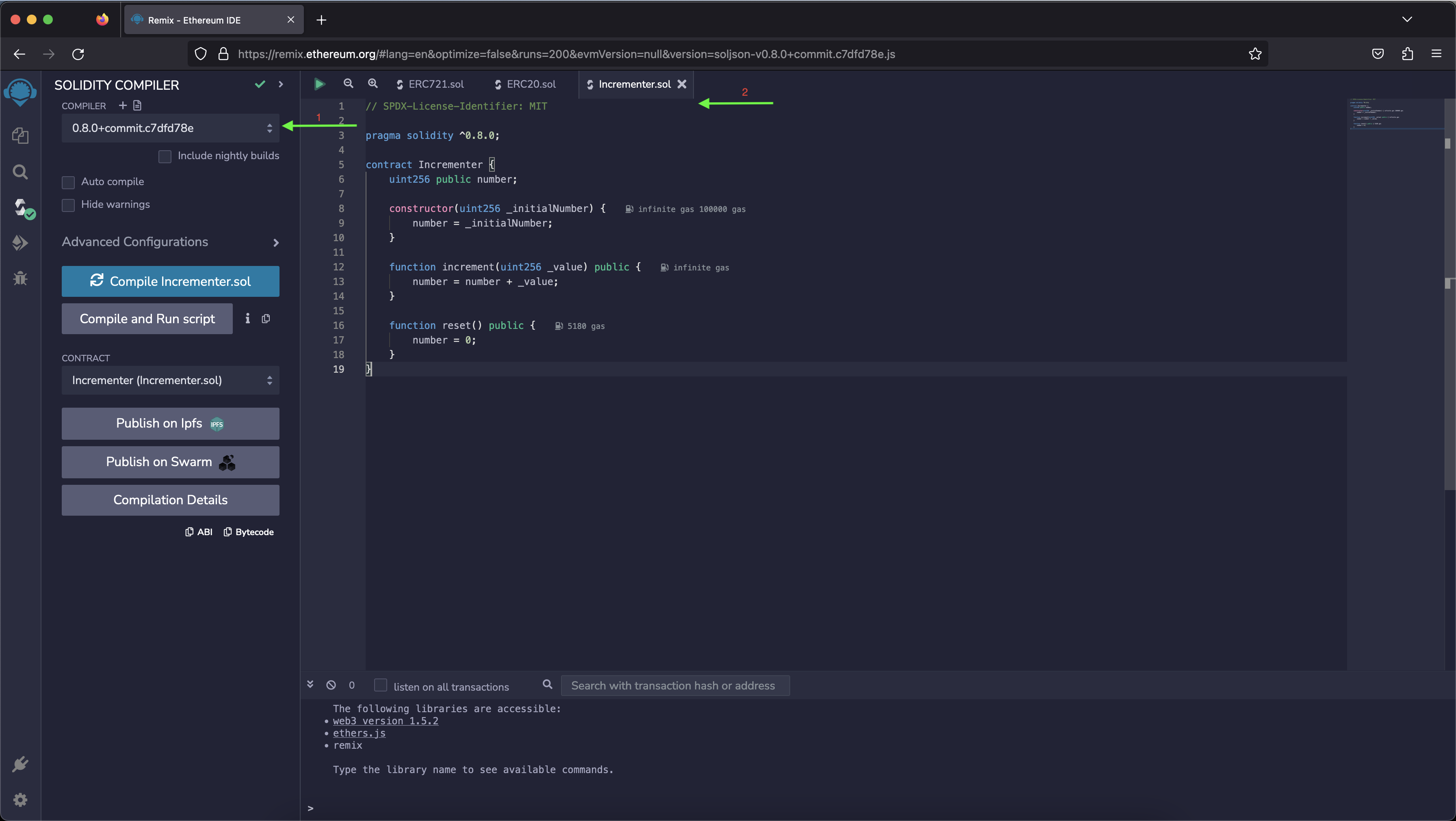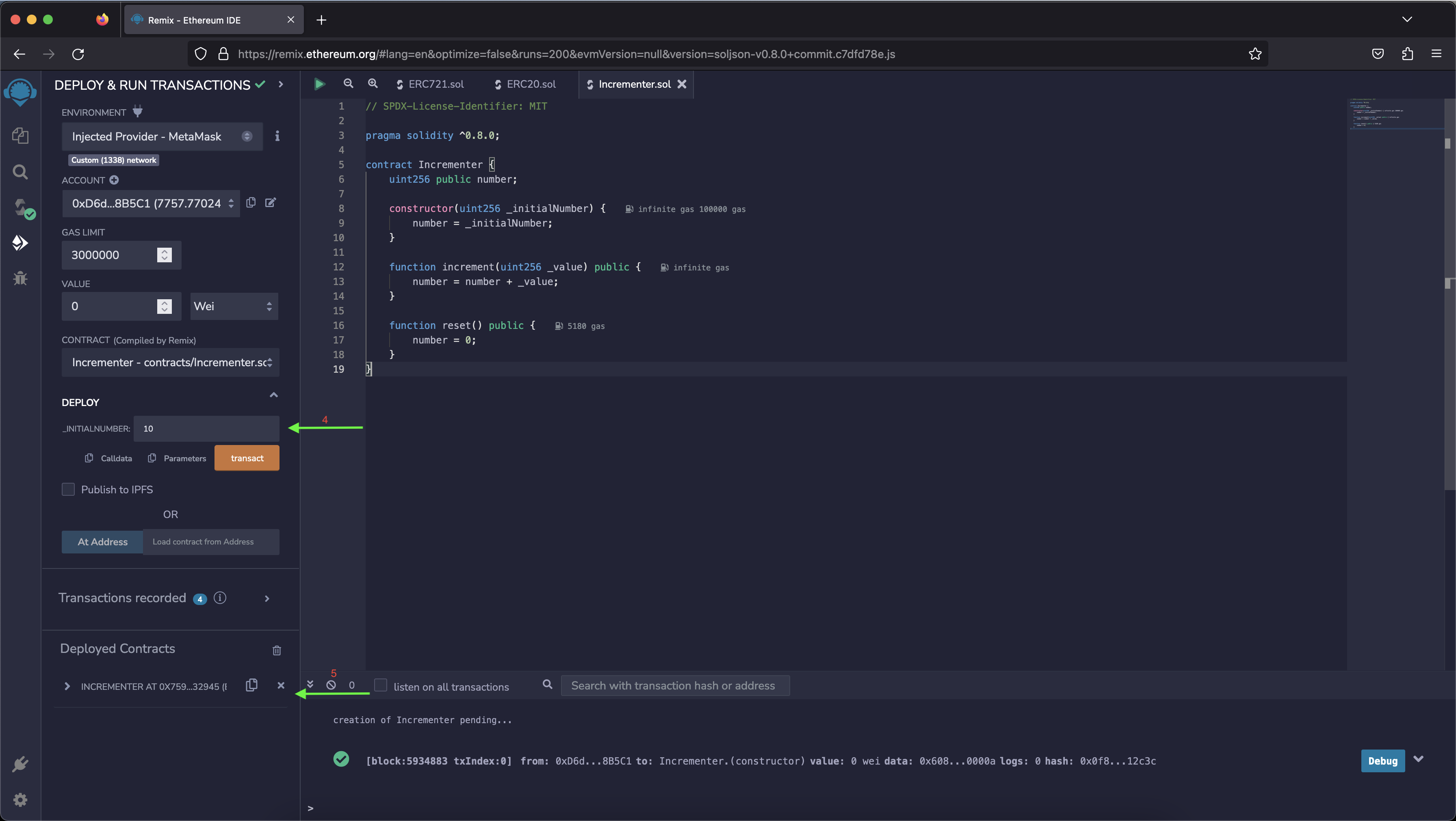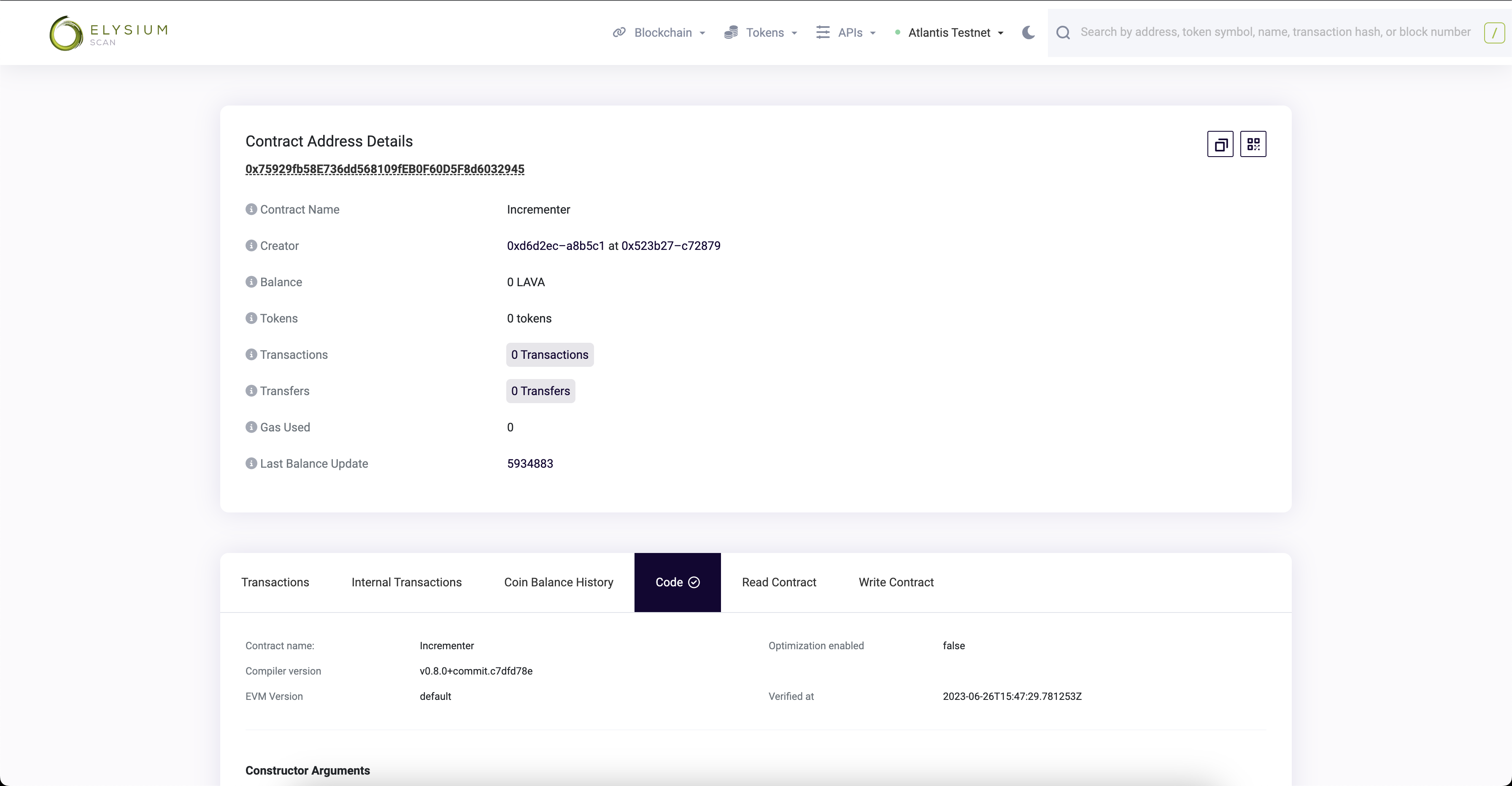Verify Smart Contracts using Block Explorers
Verifying smart contracts on a block explorer is a great way of improving the transparency and security of deployed smart contracts on Elysium. Users can directly view the source code for verified smart contracts, and for some block explorers, can also directly interact with the contract's public methods through the block explorer's interface.
This page will outline the steps for verifying smart contracts on Elysium networks through block explorer.
Deploying the Contract
In order to verify a smart contract on a block explorer, the contract must be first deployed on the target network first. This tutorial will be deploying the smart contract to Elysium.
You can check this page for a tutorial on deploying smart contracts using Ethereum libraries
on Elysium. You may also use a developer tool such as Remix,
or another tool if preferred, to deploy the smart contract to Elysium.
This tutorial will use the same contract as the above deployment tutorial for the contract verification example.
The contract used is a simple incrementer, arbitrarily named Incrementer.sol. The Solidity code is the following:
// SPDX-License-Identifier: MIT
pragma solidity ^0.8.0;
contract Incrementer {
uint256 public number;
constructor(uint256 _initialNumber) {
number = _initialNumber;
}
function increment(uint256 _value) public {
number = number + _value;
}
function reset() public {
number = 0;
}
}
Collecting Information for Contract Verification
You will need to collect some information related to the contract's compiler and deployment in order to verify it successfully.
- Take note of the Solidity compiler version used to compile and deploy the contract. The Solidity compiler version can usually be selected or specified in the deployment tool used
- Take note of any SPDX license identifier used at the beginning of the Solidity source file (the example uses MIT
license):
// SPDX-License-Identifier: MIT - (Optional) If optimization is enabled during compilation, take note of the value of the optimization runs parameter
- (Optional) If the contract constructor method accepts arguments, take note of the ABI-encoded form of the constructor arguments
- After deployment, take note the deployed contract address of the smart contract. The deployment address of the
contract can be found either in the console output if using a command line based tool such as Truffle, Hardhat, or an
Ethereum library, or it can be copied from the GUI in tools such as Remix IDE


Verify the Contract
The next step will be verifying the smart contract in an EVM compatible explorer for the Elysium network that you deployed to.
BlockScout
Go to the contract's page on BlockScout for the respective network by searching
for its address, and click on Verify & Publish under the Code tab.

On the verification page, the contract address will be prefilled. Fill in the following information:
- Fill in the contract name; this must be the same name as the contract definition. In the example, the contract name
is
Incrementer - Fill in the Compiler, EVM Version, and Optimization fields (if optimization was enabled during compiling)
- Copy and paste the entirety of the Solidity smart contract into the text field
- (Optional) Toggle Try to fetch constructor arguments automatically to Yes, or fill in the ABI-encoded constructor arguments manually if the contract constructor accepts arguments
- (Optional) Add contract libraries and their addresses if any were used in the contract
- Click Verify & Publish at the bottom when all the information is filled out

After a short wait, if the verification is completed successfully, the browser will return to the contract's Code
page, displaying information including the contract's ABI encoded constructor arguments, the contract name, bytecode,
ABI and source code. The contract page will also have two additional tabs, Read Contract and Write Contract for
users to read or write to the contract directly.
